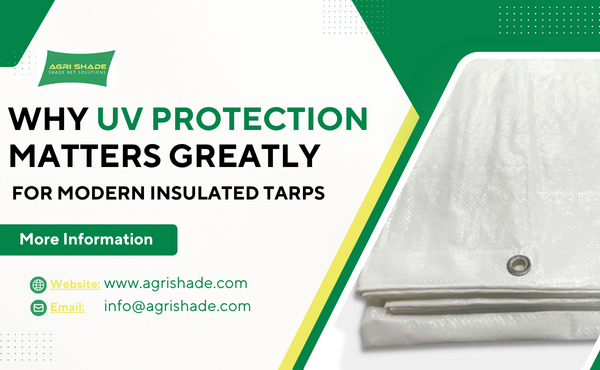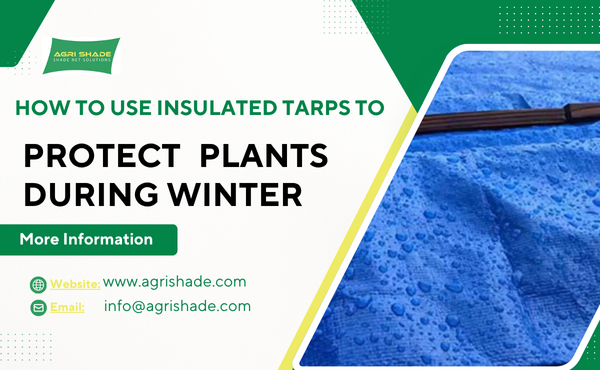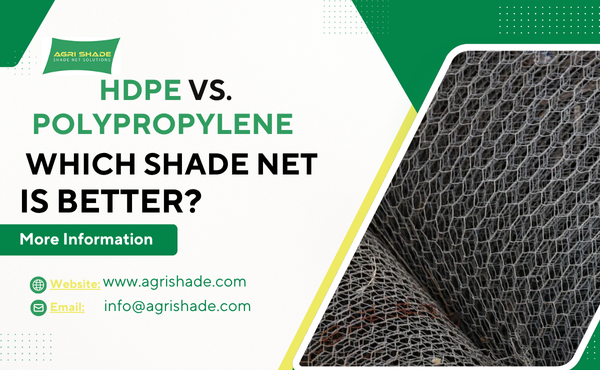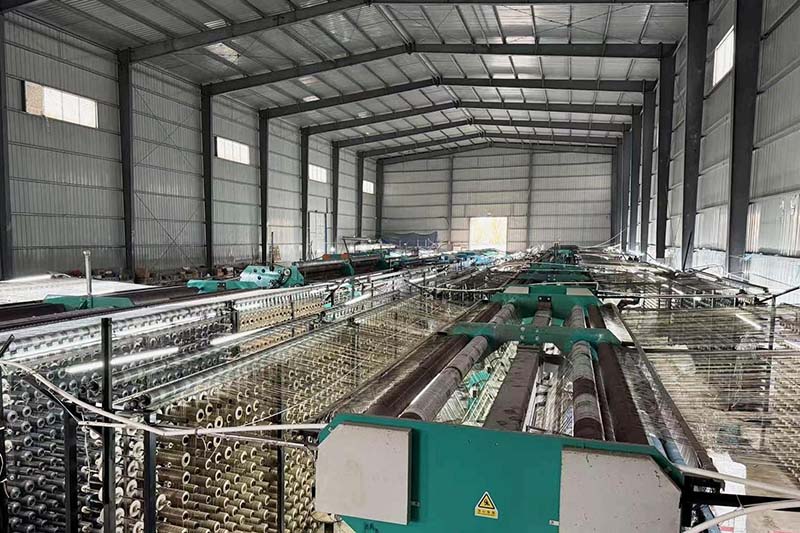
When comparing hdpe vs. polypropylene for shade nets, hdpe often stands out as the better choice. HDPE offers excellent UV resistance, strong durability, and a longer lifespan. These qualities make it ideal for outdoor shade applications.
Key factors such as durability, effective shade, UV protection, cost, installation, and maintenance all influence the decision. Every environment is unique, so users should select the shade solution that fits their needs best.
HDPE vs. Polypropylene Key Features
Key Features
Choosing the right shade cloth depends on understanding the differences between hdpe vs. polypropylene. Both materials offer unique benefits for shade netting, but their performance varies in key areas. The table below compares their main features:
| Feature | HDPE Shade Cloth | Polypropylene Shade Cloth |
|---|---|---|
| Durability | High | Moderate |
| UV Resistance | Excellent (with UV stabilization) | Good (less UV stabilization) |
| Strength | Strong, resists tearing | Moderate strength |
| Flexibility | Good, maintains shape | Fair, can stretch or sag |
| Moisture Resistance | Good | Excellent |
| Airflow | Superior, allows ventilation | Moderate |
| Lifespan | Long (5-10 years) | Shorter (2-5 years) |
| Cost | Moderate | Lower |
| Installation | Easy, lightweight | Easy, lightweight |
| Maintenance | Low, easy to clean | Low, but may degrade faster |
| Shade Net Color | Wide range available | Limited range |
Pros and Cons Overview
Understanding the pros and cons of each material helps users select the best shade netting for their needs. Below is a breakdown of the main advantages and disadvantages:
HDPE Shade Cloth
- Pros:
- Superior uv stabilization protects against sun damage.
- High strength and durability, resists tearing and fraying.
- Excellent airflow, keeps plants and spaces cooler.
- Long lifespan, ideal for outdoor use.
- Available in many woven shade cloth and knitted shade net options.
- Wide variety of shade net color choices.
- Cons:
- Moderate cost compared to polypropylene.
- May not offer the same moisture resistance as polypropylene.
Polypropylene Shade Cloth
- Pros:
- Excellent moisture resistance, suitable for humid or rainy environments.
- Lower cost, budget-friendly for short-term projects.
- Lightweight and easy to install.
- Cons:
- Lower uv stabilization, can degrade faster in sunlight.
- Moderate strength, may tear or lose shape over time.
- Shorter lifespan, especially in harsh climates.
- Limited options for woven shade cloth and shade net color.
When comparing hdpe vs. polypropylene, hdpe shade cloth provides better protection and longer service life. Its uv stabilization and strength make it the top choice for most shade netting applications.
Polypropylene works well for temporary or indoor shade needs, but it cannot match the durability or performance of hdpe in outdoor environments.
Durability and Longevity of Shade Nets
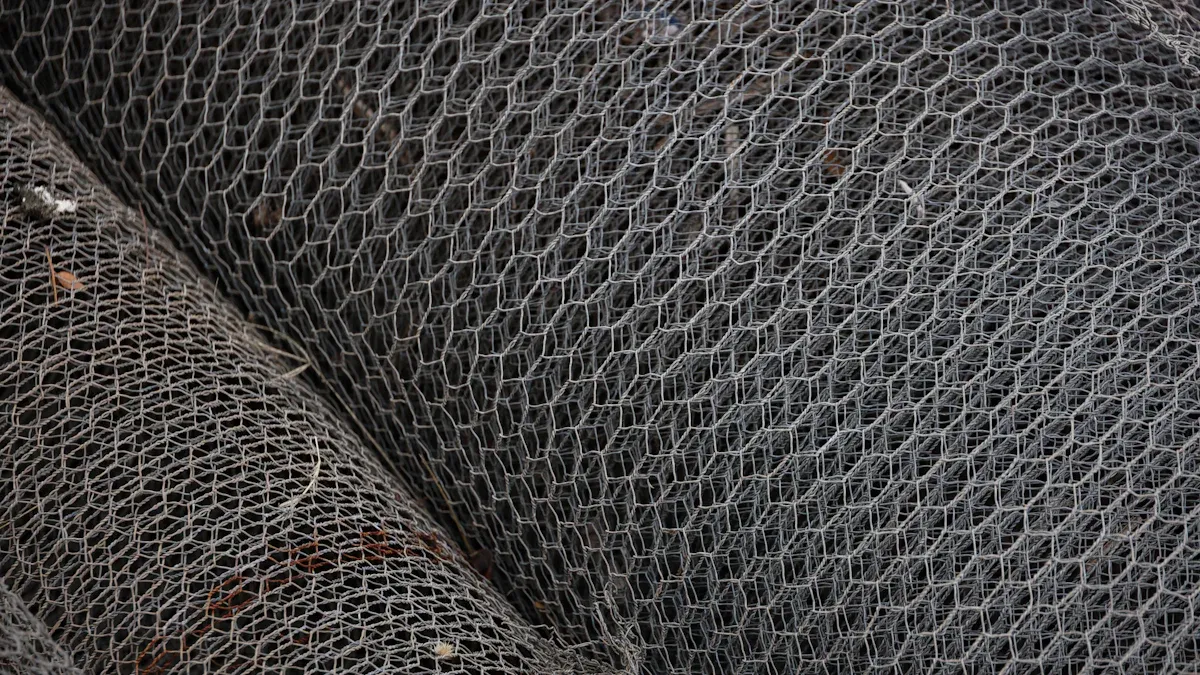
Durability of HDPE Monofilament vs. Polypropylene Monofilament
Durability plays a key role in choosing the right shade net. HDPE monofilament shade cloth stands out for its strong resistance to UV rays and harsh weather.
The fibers in HDPE nets do not break down easily when exposed to sunlight. This material keeps its shape and strength even after years of use. Polypropylene monofilament shade cloth offers good performance, but it does not match the durability of HDPE.
Polypropylene nets can stretch or sag over time, especially when exposed to strong sun and changing weather.
HDPE monofilament shade cloth resists tearing and fraying.
It holds up well in windy or rainy weather. Polypropylene nets may work for short-term shade, but they often show wear faster. The structure of HDPE nets helps them last longer and provide steady shade.
Lifespan in Sun and Weather
The lifespan of a shade net depends on how well it stands up to sun and weather. HDPE nets can last five to ten years in outdoor settings. They keep their color and shape even after long exposure to sunlight, rain, and wind.
Polypropylene nets usually last two to five years. They may fade, weaken, or lose shape faster, especially in places with strong sun or heavy weather.
Weather changes can test the strength of any shade net. HDPE monofilament shade cloth handles these changes better than polypropylene. It stays strong during storms, heat waves, and cold snaps. Polypropylene nets may become brittle or stretch out after repeated weather cycles.
Shade Cloth Performance
Light and UV Filtration
Shade cloth plays a major role in protecting plants and people from harsh sunlight. The right shade netting can block harmful uv rays and control the amount of light that reaches crops or outdoor spaces.
HDPE shade cloth uses advanced uv stabilization to filter sunlight. This net keeps out most uv rays and reduces heat stress for plants. Polypropylene shade cloth also blocks some uv, but it does not match the protection offered by hdpe shade cloth.
Cooling and Airflow
Shade cloth does more than block light. It also helps cool spaces and improve airflow. HDPE shade cloth stands out for its ability to keep air moving while providing shade. The net design lets breezes pass through, which lowers temperatures under the shade netting.
Knitted shade net offers better airflow than woven types. This feature helps prevent heat buildup and keeps plants healthy.
Shade netting with good airflow supports strong growth and reduces the risk of mold. The net keeps its shape, so the shade remains consistent over time. Polypropylene shade cloth may sag or stretch, which can reduce airflow and shade quality. HDPE shade cloth maintains its structure, giving reliable shade and cooling.
Knitted shade net works well for greenhouses, gardens, and outdoor seating. The net provides shade and keeps spaces comfortable. Shade cloth with strong airflow helps plants thrive and makes outdoor areas pleasant for people.
Cost and Value for Shade Nets
Cost of HDPE Monofilament vs. Polypropylene Monofilament
When buyers look at shade cloth options, price often becomes a deciding factor. Shade cloth made from polypropylene usually costs less than shade cloth made from HDPE.
Polypropylene shade netting appeals to those who want a budget-friendly solution for short-term shade. HDPE shade cloth, on the other hand, comes with a higher price tag. This higher cost reflects the advanced UV protection and longer lifespan that HDPE shade netting provides.
Long-Term Value
Long-term value matters most for those who need reliable shade in outdoor spaces. HDPE shade cloth stands out for its durability and ability to resist UV damage.
This net keeps its shape and shade level for many years. Polypropylene shade netting may save money at first, but it often needs replacement sooner. Frequent replacement increases the total cost over time.
A few reasons why HDPE shade cloth offers better long-term value:
- The net provides consistent shade and UV protection for years.
- Shade netting made from HDPE resists fading and stretching.
- Fewer replacements mean less waste and lower maintenance costs.
Installation and Maintenance
Ease of Setup
Installing shade cloth can be a simple process for most users. Both HDPE and polypropylene shade cloth options come in lightweight rolls, making them easy to handle. People often use shade netting for gardens, patios, greenhouses, and other outdoor spaces.
To start, measure the area that needs shade. Cut the shade cloth to fit the space. Attach the net to posts, wires, or frames using clips, ties, or hooks. Many choose knitted shade netting because it stretches slightly and fits snugly. Woven shade cloth offers a more rigid structure, which some prefer for permanent shade.
Maintenance Needs
Shade cloth requires regular care to maintain its performance. HDPE shade netting resists mold and dirt, so cleaning is easy.
Use a hose or soft brush to remove dust and debris from the net. Polypropylene shade netting also cleans easily, but it may show wear sooner. Inspect the net for tears or loose ties every few months. Replace damaged sections to keep the shade even and strong.
Best Use Cases for Shade Nets

Agriculture and Farming
Farmers rely on shade cloth to protect crops from intense sunlight. Shade cloth helps control temperature and reduces water loss in fields.
Many growers use shade cloth with high uv protection to prevent plant damage. The net structure allows air to move, which keeps crops healthy. Farmers often choose knitted shade cloth for vegetable gardens, nurseries, and greenhouses.
This type of shade cloth supports strong plant growth and improves yields. In orchards, shade cloth shields fruit from sunburn and helps maintain quality. The net also keeps birds and insects away from crops.
Home and Garden
Homeowners use shade cloth to create comfortable spaces in their yards. Shade cloth works well for patios, pergolas, and play areas. The net provides relief from the sun and lowers the risk of uv exposure. Many people install shade cloth over gardens to protect flowers and vegetables.
The net helps control light and keeps soil moist. Shade cloth also works for pet enclosures and carports. Homeowners often pick shade cloth in colors that match their outdoor decor. The net is easy to install and requires little maintenance.
Commercial Applications
Businesses use shade cloth in many ways. Shade cloth covers parking lots, playgrounds, and sports fields. The net provides uv protection for people and property. In nurseries and garden centers, shade cloth keeps plants healthy and attractive.
Restaurants and cafes use shade cloth to create pleasant outdoor seating. The net helps control temperature and makes spaces more inviting. Construction sites use shade cloth for safety and dust control. The net is strong and stands up to tough conditions.
| Application | Benefit of Shade Cloth |
|---|---|
| Parking lots | Protects vehicles from uv rays |
| Playgrounds | Keeps children safe from sun |
| Outdoor dining | Creates cool, shaded spaces |
| Construction sites | Reduces dust and debris |
Conclusion
When comparing hdpe vs. polypropylene, most users find HDPE shade nets offer better durability, UV resistance, and long-term value. Polypropylene works for short-term or indoor use. Key factors include lifespan, UV protection, cost, installation, and climate.


